*NURSING > STUDY GUIDE > ATI RN Comprehensive Predictor Remediation (All)
ATI RN Comprehensive Predictor Remediation
Document Content and Description Below
ATI RN COMPREHENSIVE PREDICTOR REMEDIATION Management of Care – (9) Advance Directives/Self-Determination/Life Planning – (1) Professional Responsibilities: Client Teaching About Do-... Not-Resuscitate Orders (Active Learning Template – Basic Concept, RM Leadership 7.0 Chp. 3) • Unless a do not resuscitate (DNR) or allow natural death (AND) prescription is written, the nurse should initiate CPR when a client has no pulse or respirations. The written prescription for a DNR or AND must be placed in the client’s medical record. The provider consults the client and the family prior to administering a DNR or AND. Client Rights – (1) Coordinating Client Care: Appropriate Action When a Client Leaves Against Medical Advice (Active Learning Template – Basic Concept, RM Leadership 7.0 Chp. 2) • A client who leaves a facility without a prescription for discharge from the provider is considered leaving against medical advice (AMA). A client who is legally competent has the legal right to leave the facility at any time. The nurse should immediately notify the provider. If the client is at risk for harm, it is imperative that the nurse explain the risk involved in leaving the facility. The individual should sign a form relinquishing responsibility for any complications that arise from discontinuing prescribed care. The nurse should document all communication, as well as the specific advice that was provided for the client. A nurse who tries to prevent the client from leaving the facility can face legal charges of assault, battery, and false imprisonment. Collaboration with Interdisciplinary Team – (1) Coordinating Client Care: Information to Report to Occupational Therapist (Active Learning Template – Basic Concept, RM Leadership 7.0 Chp. 2) • Patient’s condition and current status; any medications the patient is on; patient’s tolerance level for pain; any assistive devices the patient uses Confidentiality/Information Security – (1) Professional Responsibilities: Protecting Confidential Client Information (Active Learning Template – Basic Concept, RM Leadership 7.0 Chp. 3) • It is essential for nurses to be aware of the rights of clients in regard to privacy and confidentiality. Facility policies and procedures are established in order to ensure compliance with HIPAA regulations. It is essential that nurses know and adhere to the policies and procedures. HIPAA regulations also provide for penalties in the event of noncompliance with the regulations. Continuity of Care – (1) Information Technology: Preparing a Change-of-Shift Report (Active Learning Template – Basic Concept, RM FUND 9.0 Ch 5) • Nurses give this report at the conclusion of each shift to the nurse assuming responsibility for the clients. Formats include face to face, audiotaping, or presentation during walking rounds in each client’s room (unless the client has a roommate or visitors are present). An effective report should: include significant objective information about the client’s health problems; proceed in a logical sequence; include no gossip or personal opinion; relate recent changes in medications, treatments, procedures, and the discharge plan Legal Rights and Responsibilities – (1) Professional Responsibilities: Understanding Regulations for Nursing Scope of Practice (Active Learning Template – Basic Concept, RM Leadership 7.0 Chp. 3) • Standards of care guide, define, and direct the level of care that should be given by practicing nurses. They also are used in malpractice lawsuits to determine if that level was maintained. Nurses should refuse to practice beyond the legal scope of practice and/or outside of their areas of competence regardless of reason (staffing shortage, lack of appropriate personnel). Nurses should use the formal chain of command to verbalize concerns related to assignment in light of current legal scope of practice, job description, and area of competence. Performance Improvement (Quality Improvement) – (1) Maintaining a Safe Environment: Demonstrating Quality and Safety Education for Nurses Competencies (Active Learning Template – Basic Concept, RM Leadership 7.0 Chp. 4) • Safe use of equipment refers to appropriate operation of health care-related equipment by trained staff. Equipment-related injuries can occur as a result of malfunction, disrepair, or mishandling of mechanical equipment. Nurses must ensure that they have the competence necessary to use equipment for tasks that fall within their scope of practice. Nurses should use equipment only after receiving sufficient instruction. Equipment should be regularly inspected by the engineering or maintenance department and by the user prior to use. Faulty equipment (frayed cords, disrepair) can start a fire or cause an electrical shock and should be removed from use and reported immediately per agency policy. Referrals – (2) Alzheimer’s Disease: Resources for Home Care (Active Learning Template – System Disorder, RM AMS RN 10.0 Chp 8) • Refer to social services and case managers for long-term/home management, Alzheimer’s Association, community outreach programs, and support groups Nutrition and Oral Hydration: Priority Finding Following an Ischemic Stroke (Active Learning Template – System Disorder, RM FUND 9.0 Ch 39) • Identify if someone has dysphagia, this patient will need pureed foods; clear and full liquids plus pureed meats, fruits and scrambled eggs, low residue: low in fiber Safety and Infection Control – (6) Accident/Error/Injury Prevention – (2) Adverse Effects, Interactions, and Contraindications: Priority Action to an Allergic Response (Active Learning Template – Medication, RM Pharm RN 7.0 Chp 5) • Treat with epinephrine, bronchodilators, and antihistamines. Provide respiratory support and inform the provider. Health Promotion of Infants (2 Days to 1 Year): Car Seat Safety (Active Learning Template – Basic Concept, RM NCC RN 10.0 Chp 3) • Infants and toddlers remain in a rear-facing car seat until the age of 2 years or the height recommended by the manufacturer. The safest area for infants and children is the backseat of the car. Do not place rear-facing car seats in the front seat of vehicles with passenger airbags. Infants should not be left in parked cars. Emergency Response Plan – (1) Facility Protocols: Nursing Role During Mass Casualty Incident (Active Learning Template – Basic Concept, RM Leadership 7.0 Chp. 5) • Principles of mass casualty triage should be followed in health care institutions involved in a mass casualty event. These differ from the principles of triage typically following during provision of day-to-day services in an emergency or urgent care setting. During mass casualty events, casualties are separated related to their potential for survival, and treatment is allocated accordingly. This type of triage is based on doing the greatest good for the greatest number of people. Nurses can find this situation very stressful because clients who are not expected to survive are cared for last. [Show More]
Last updated: 1 year ago
Preview 1 out of 15 pages
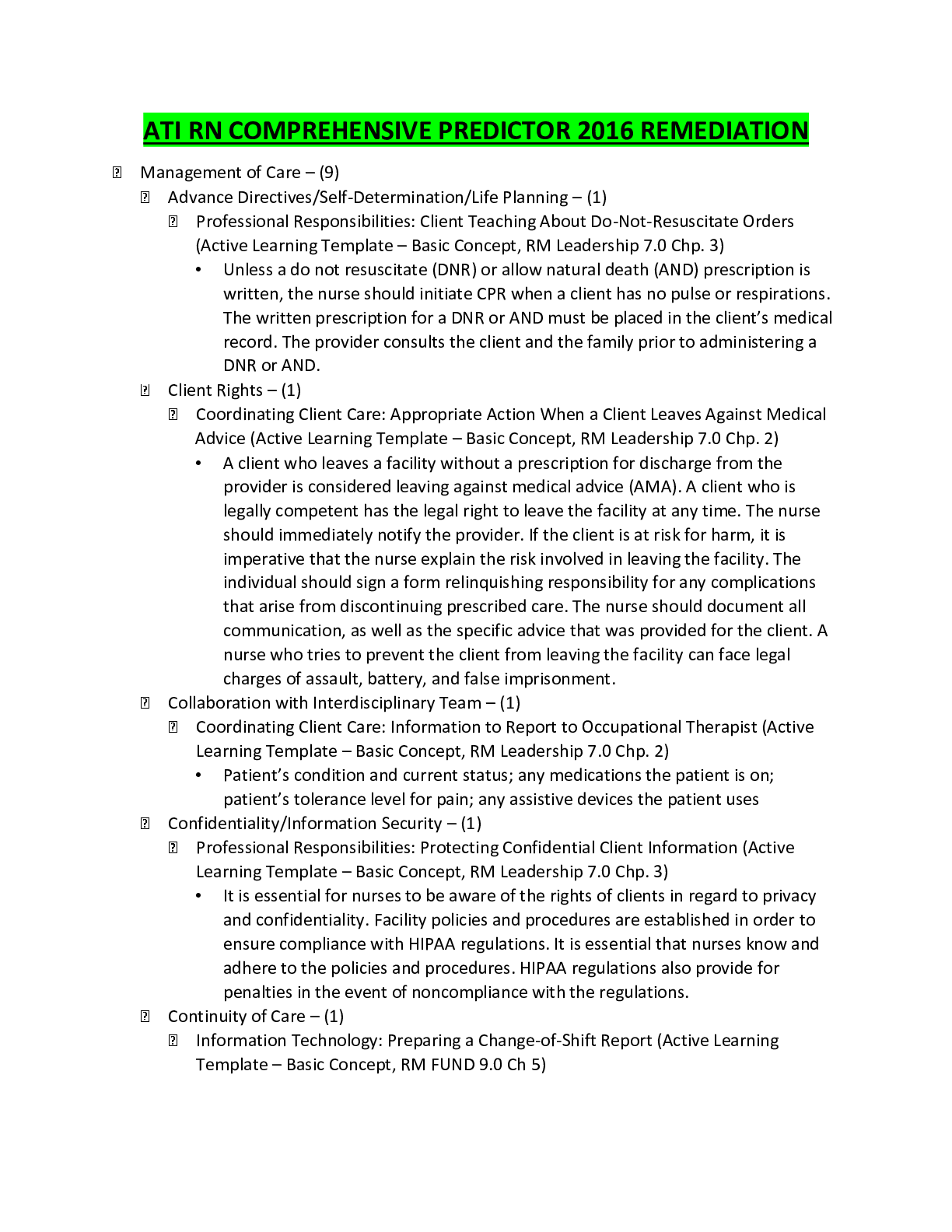
Reviews( 0 )
Document information
Connected school, study & course
About the document
Uploaded On
Mar 30, 2021
Number of pages
15
Written in
Additional information
This document has been written for:
Uploaded
Mar 30, 2021
Downloads
0
Views
56

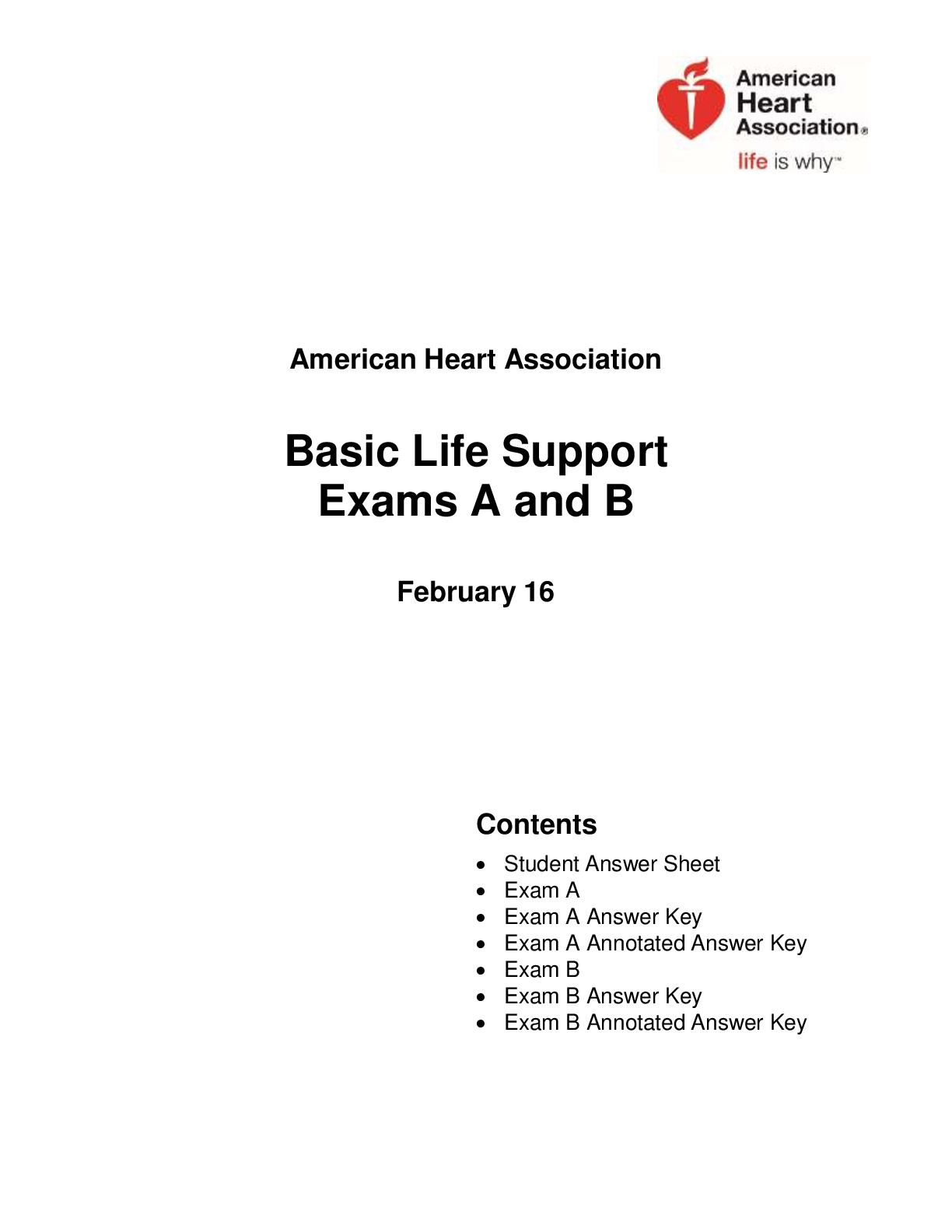

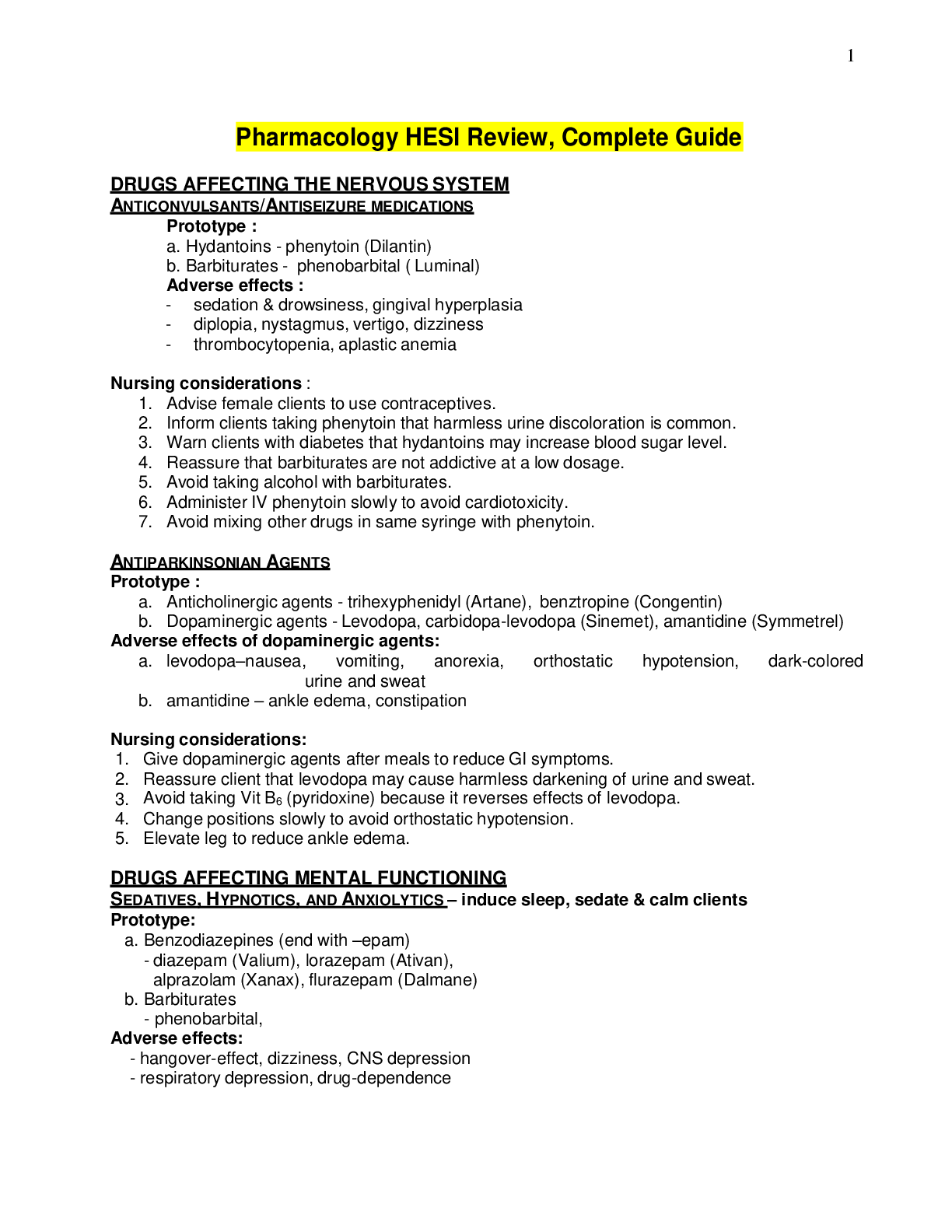

.png)

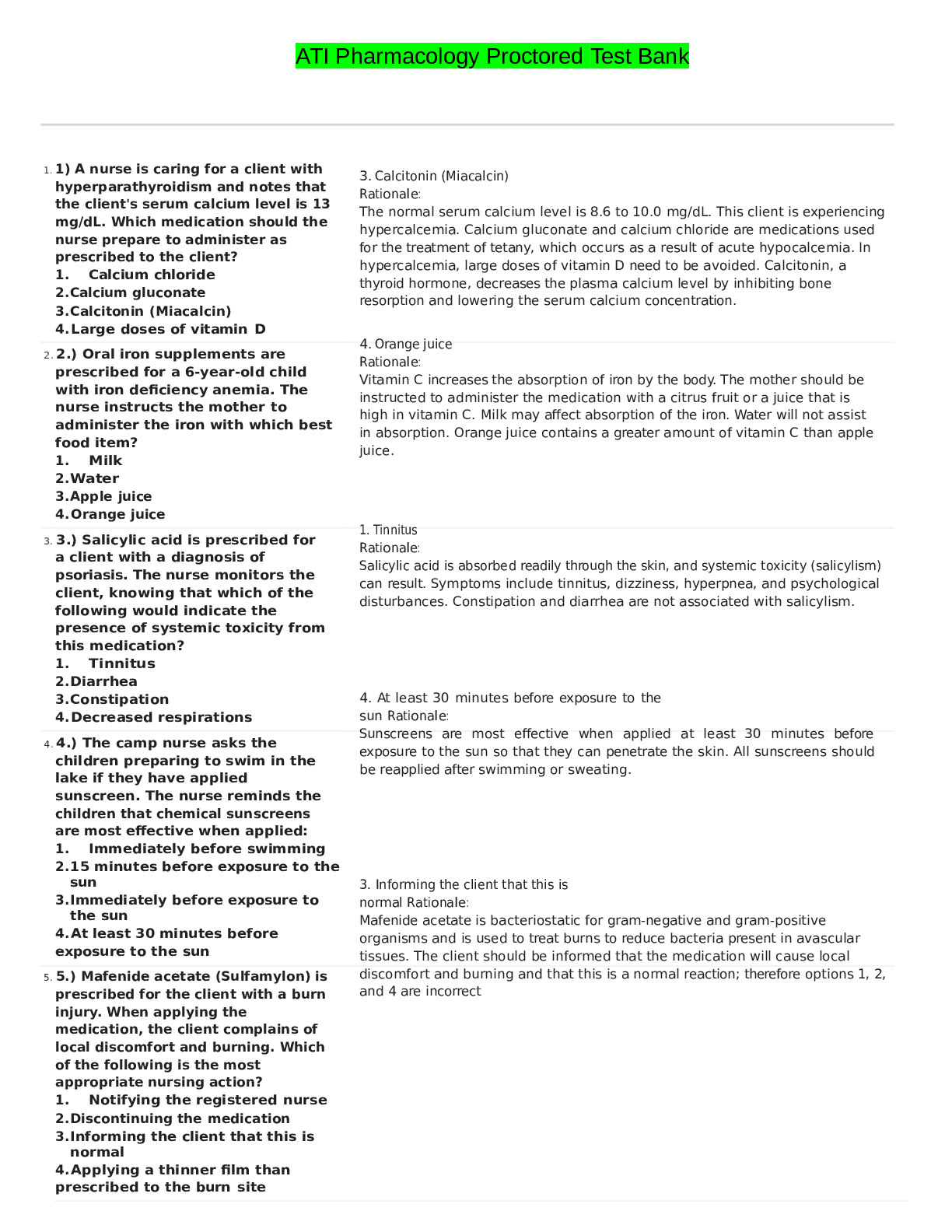

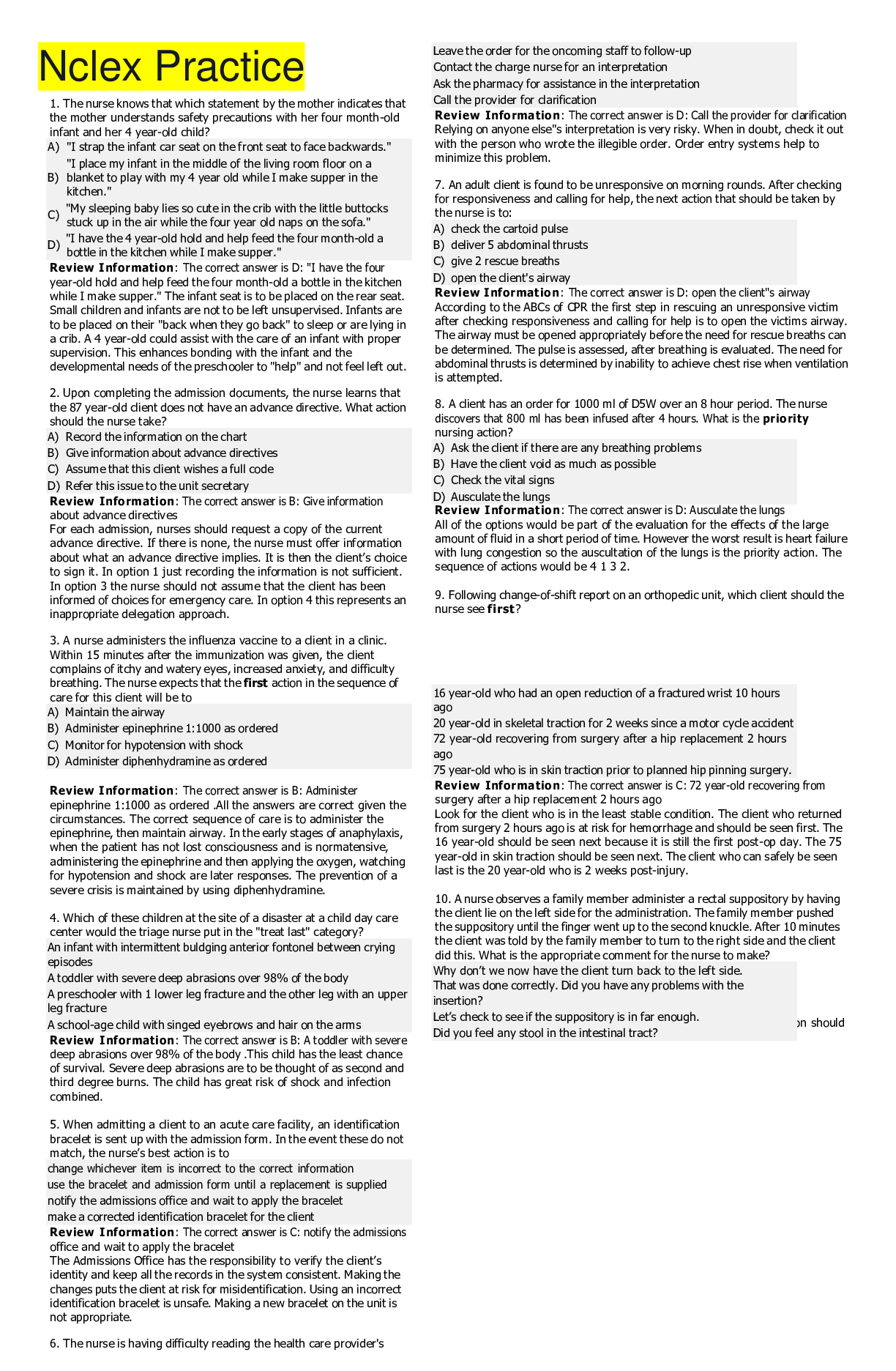
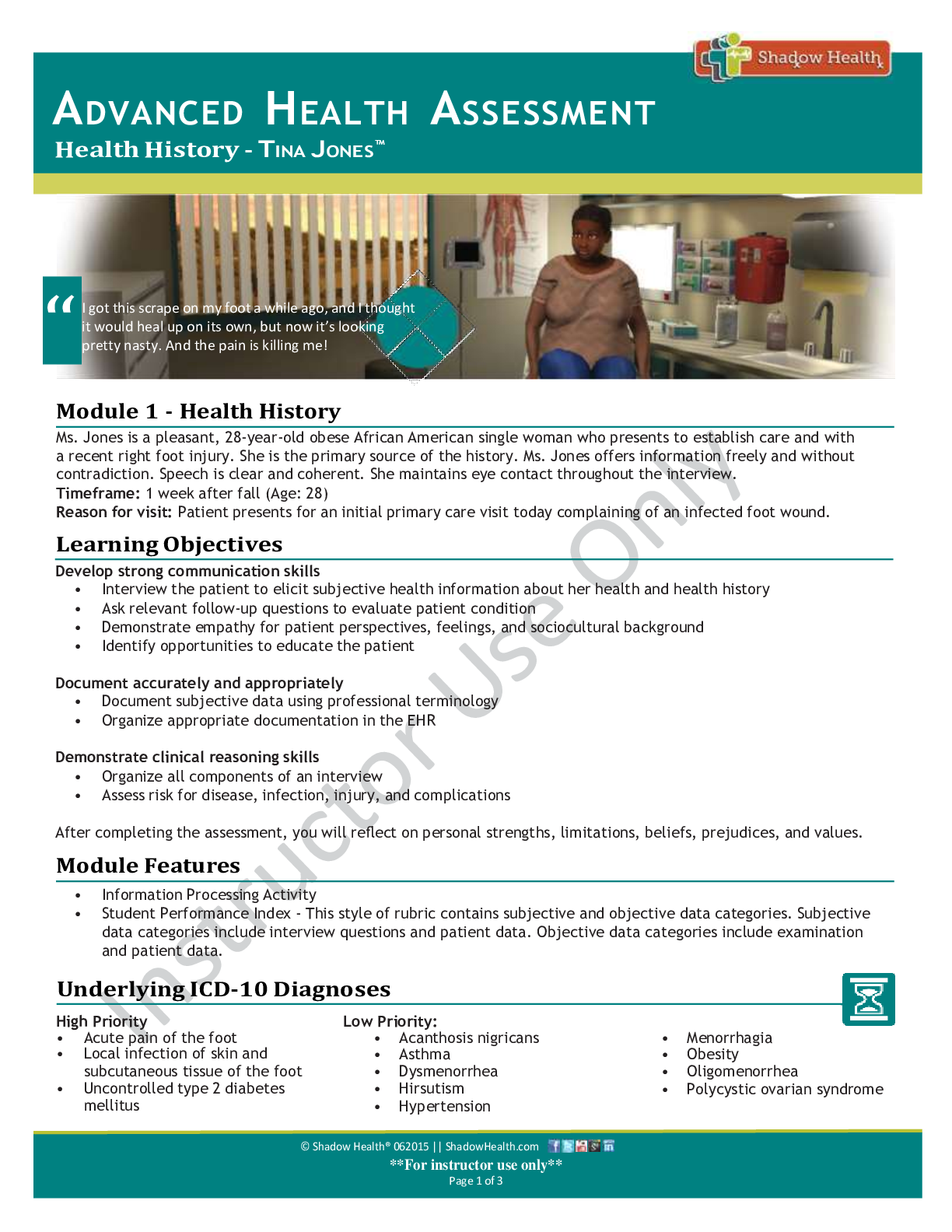

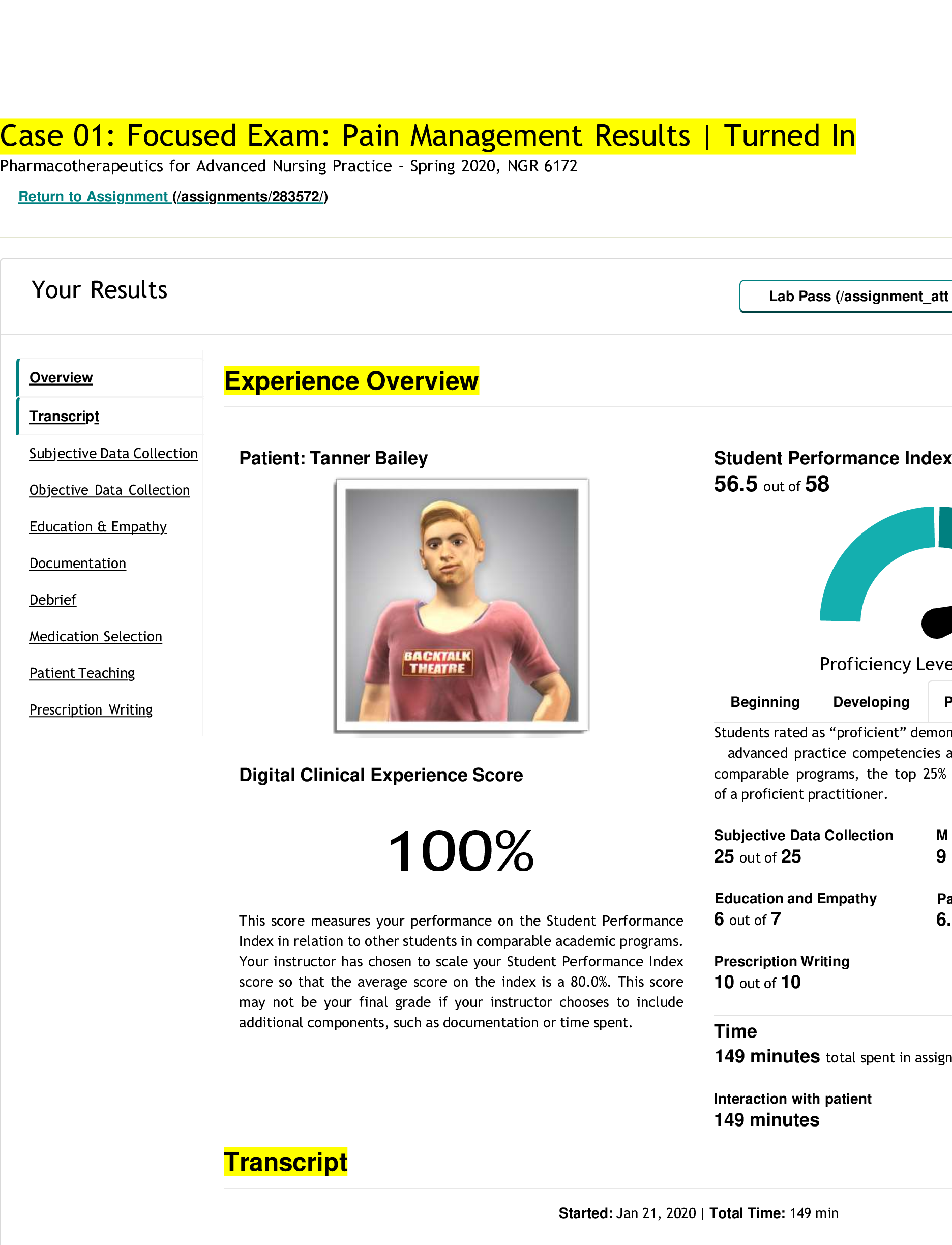
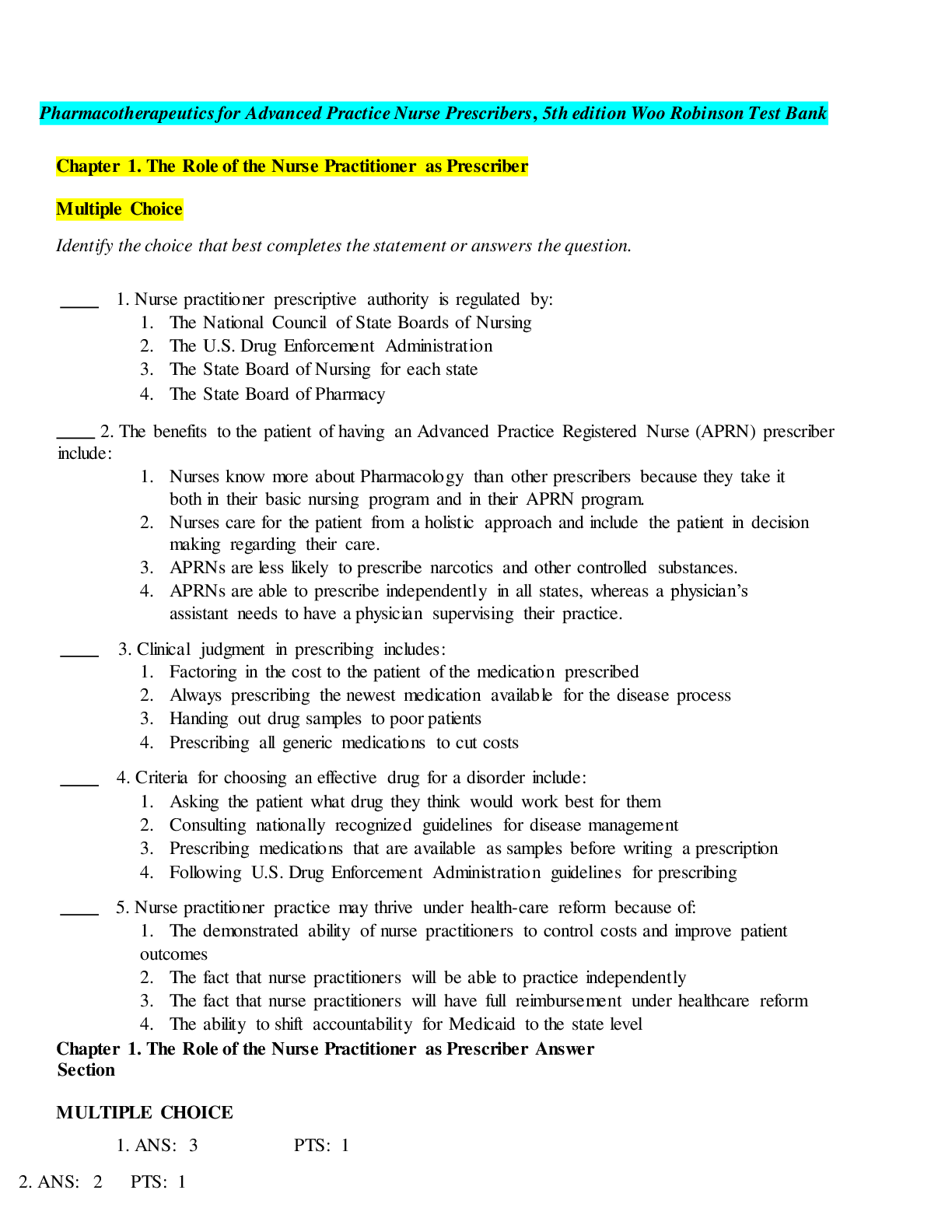
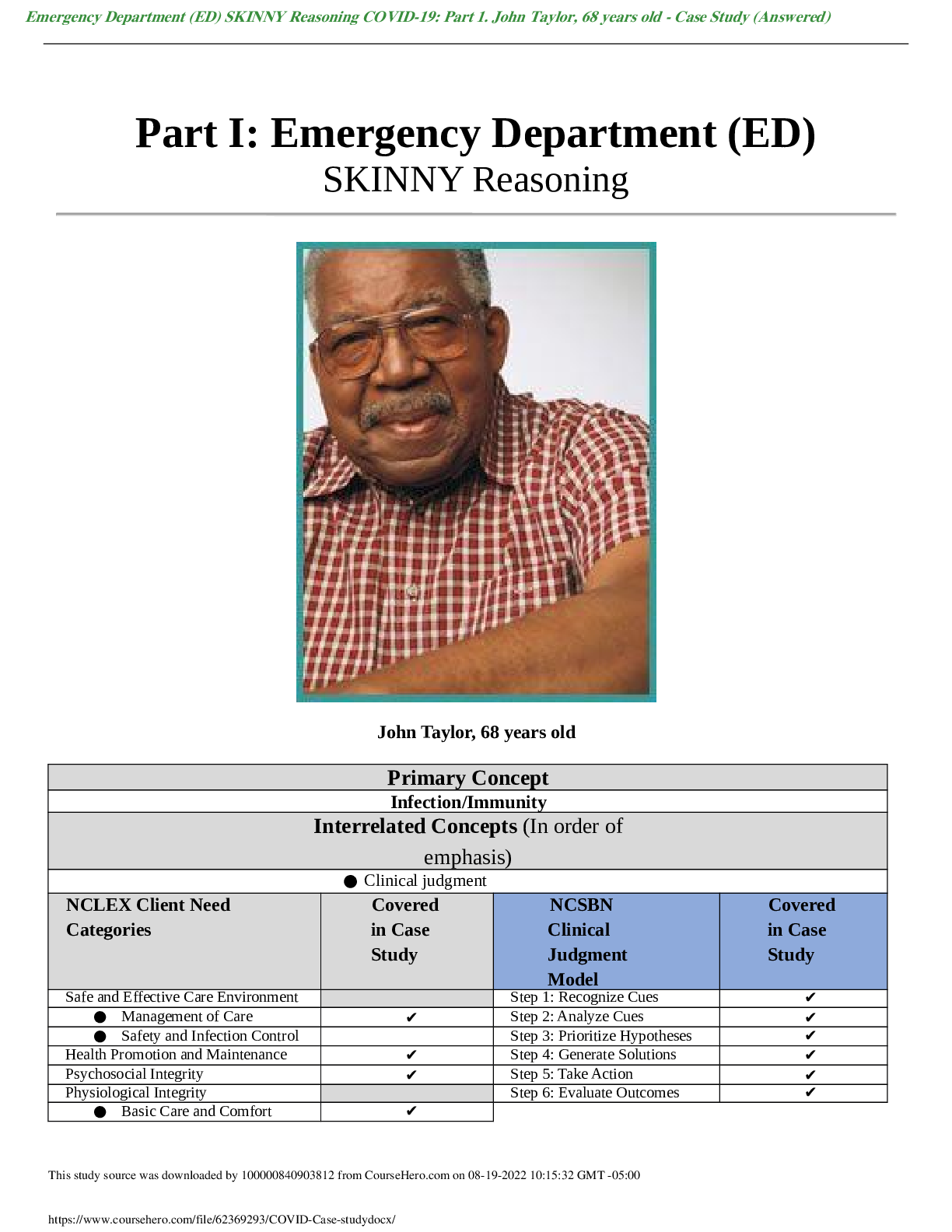
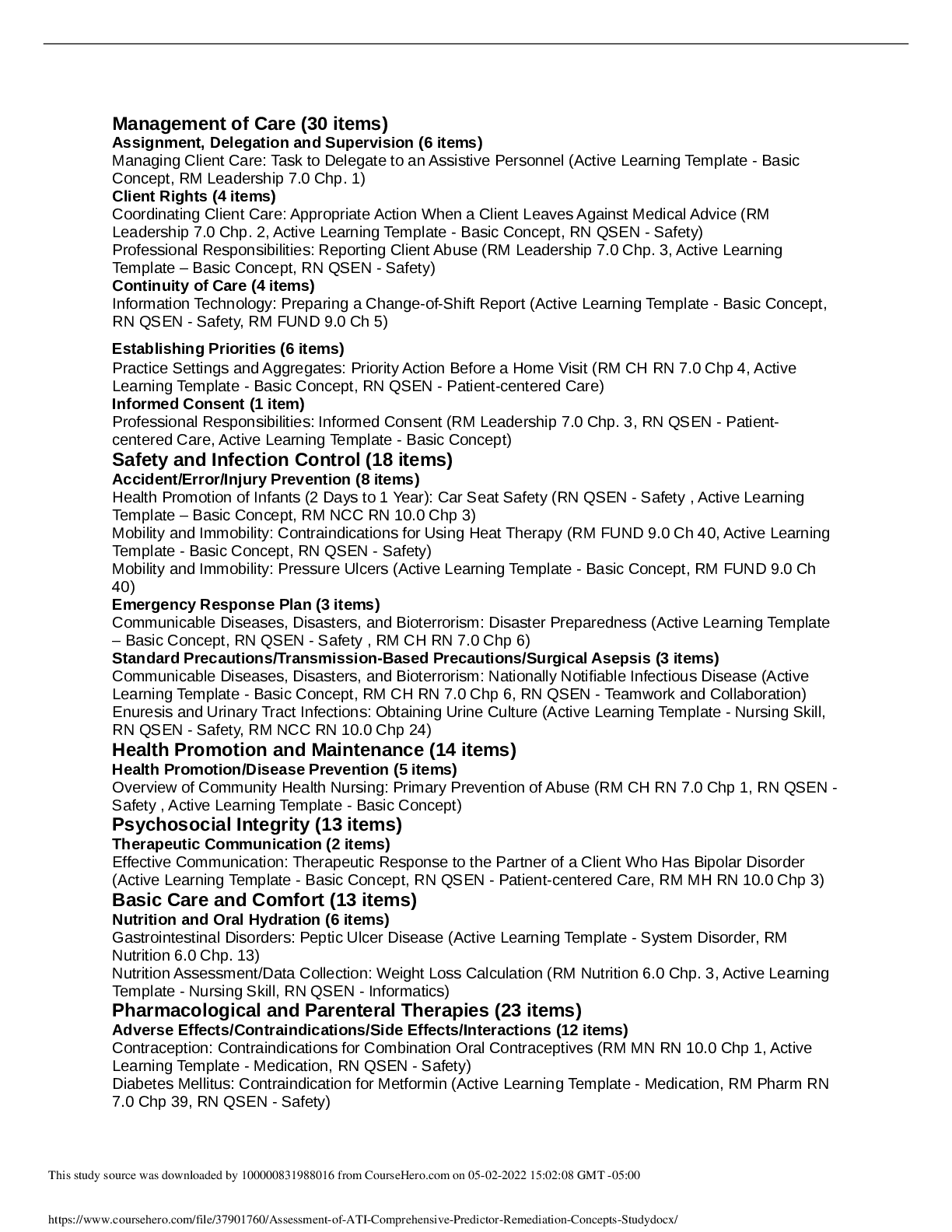
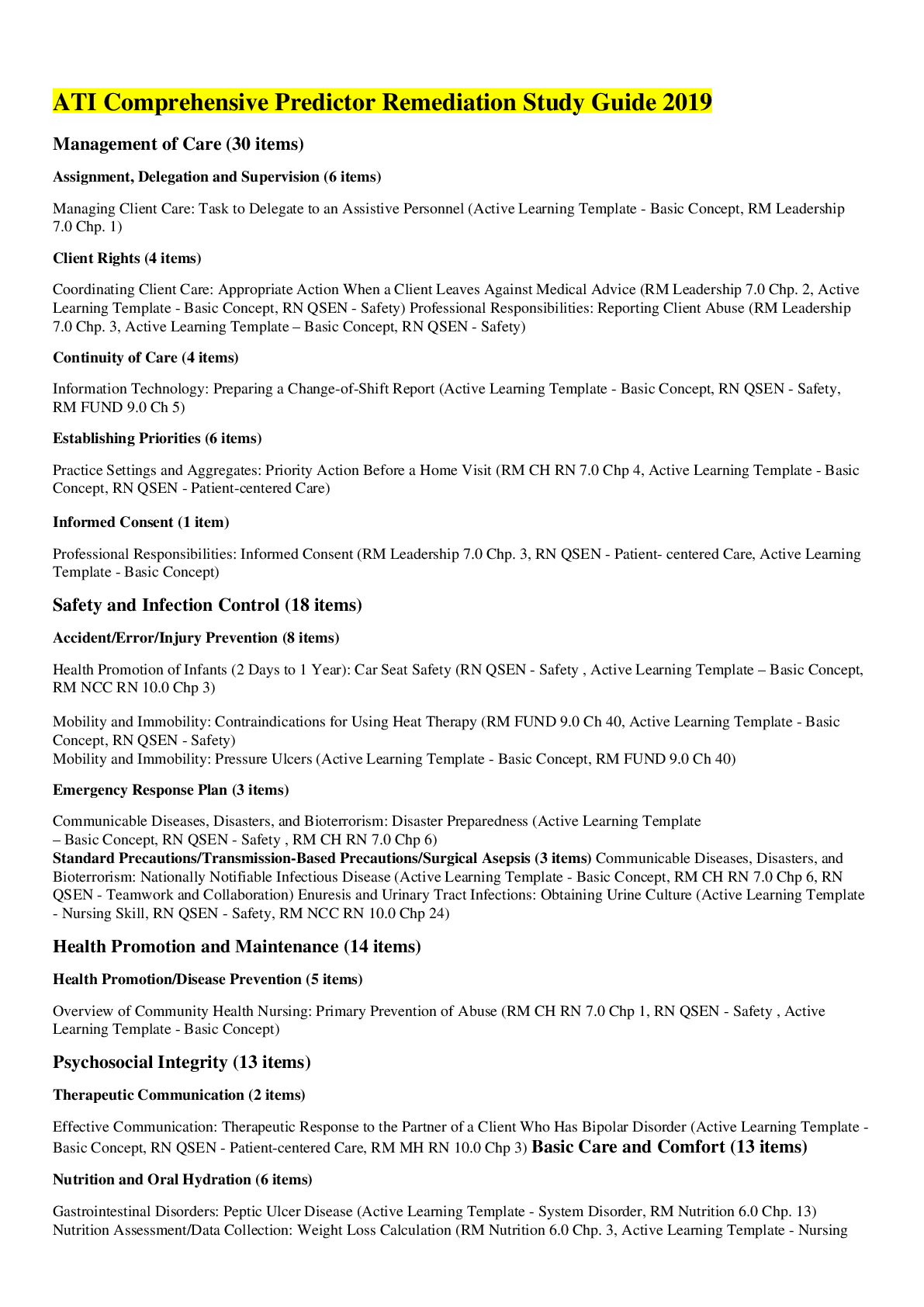
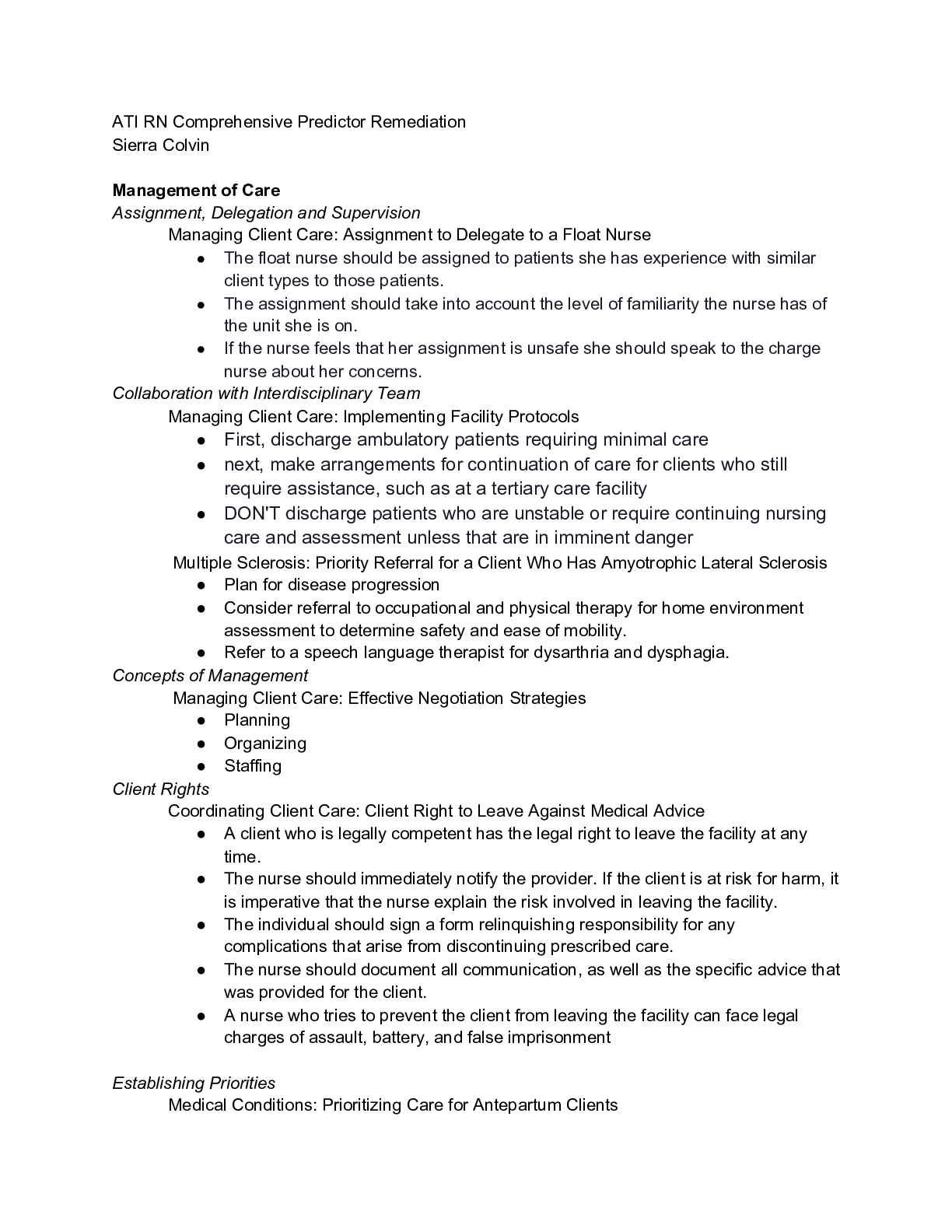
 Questions and Answers with Explanations (latest Update), All Correct, Download to Score A.png)
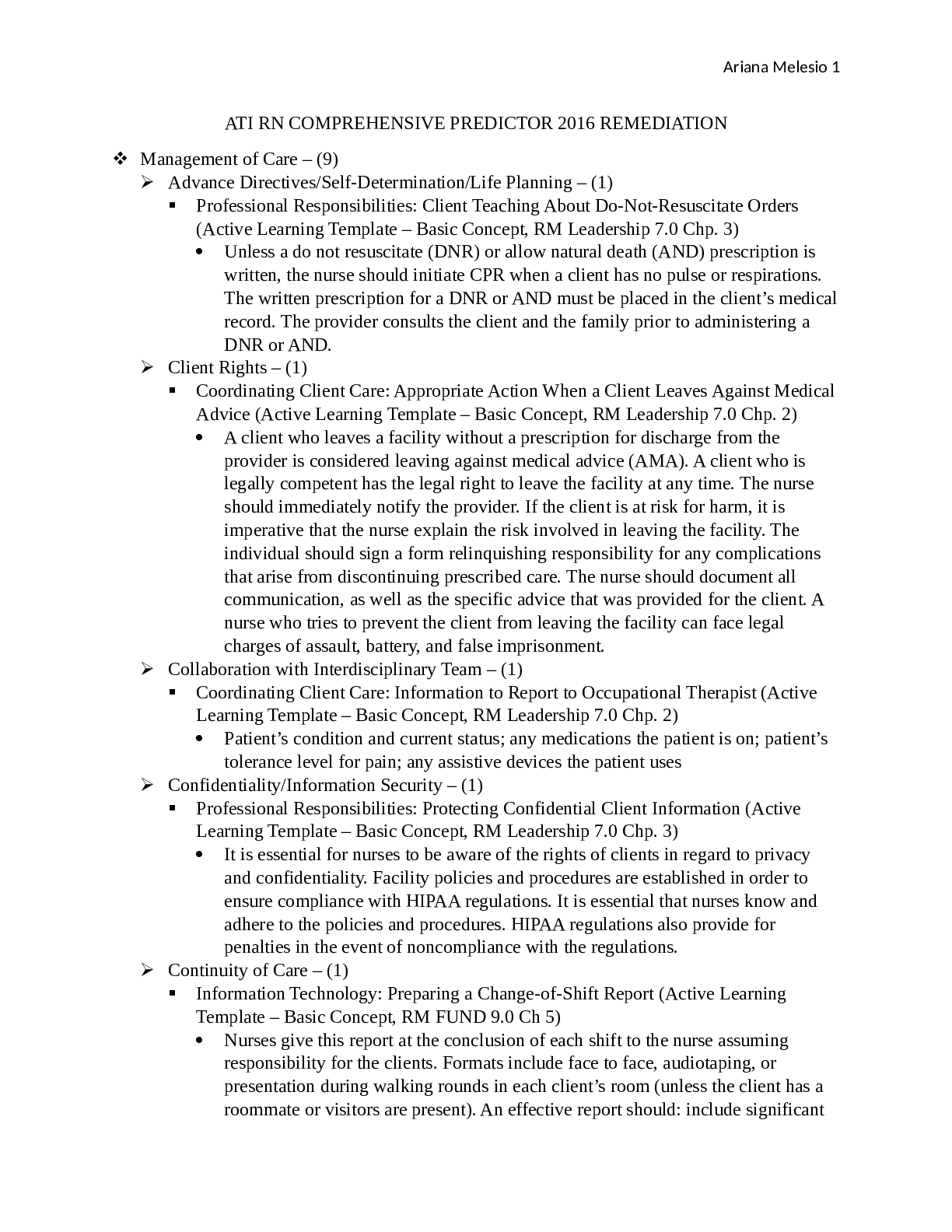
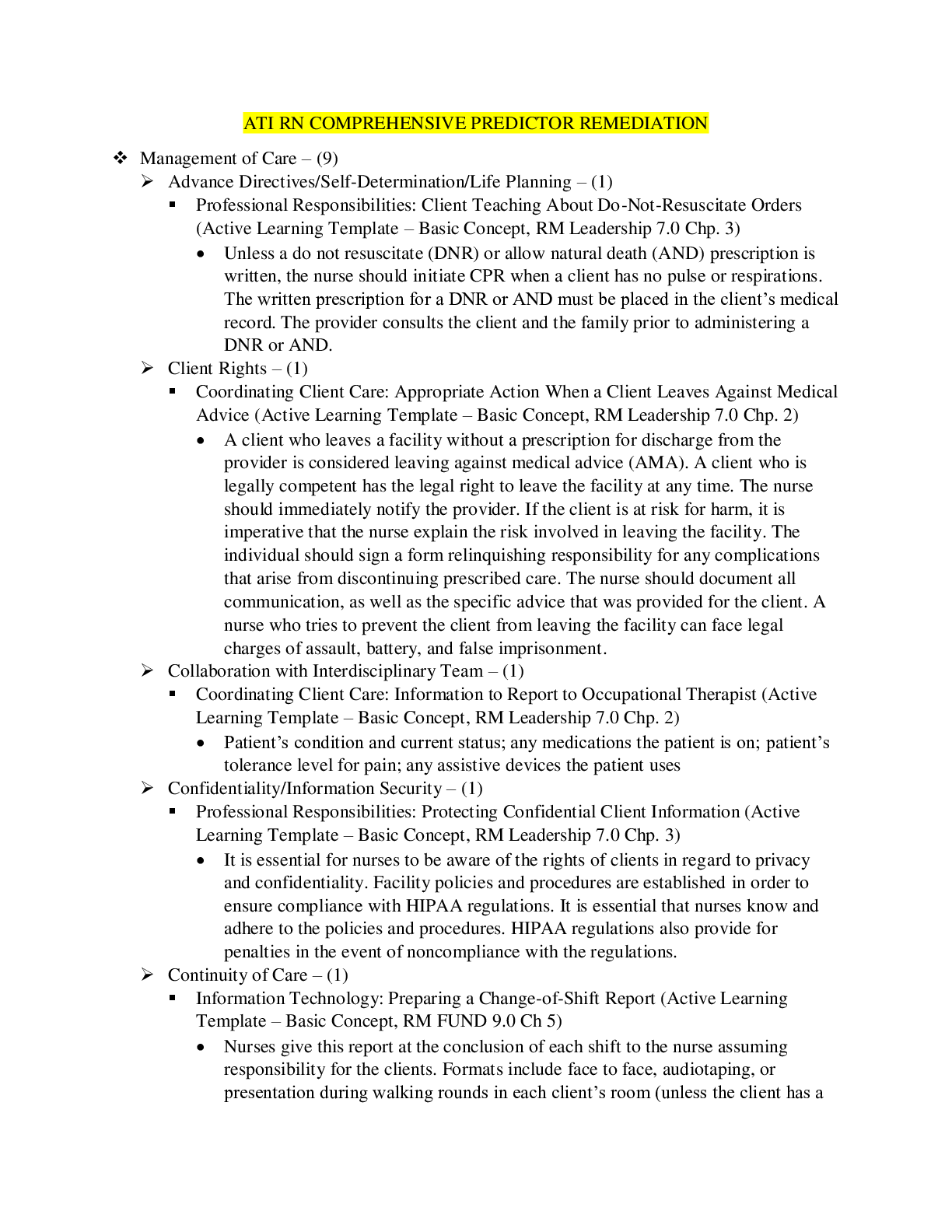
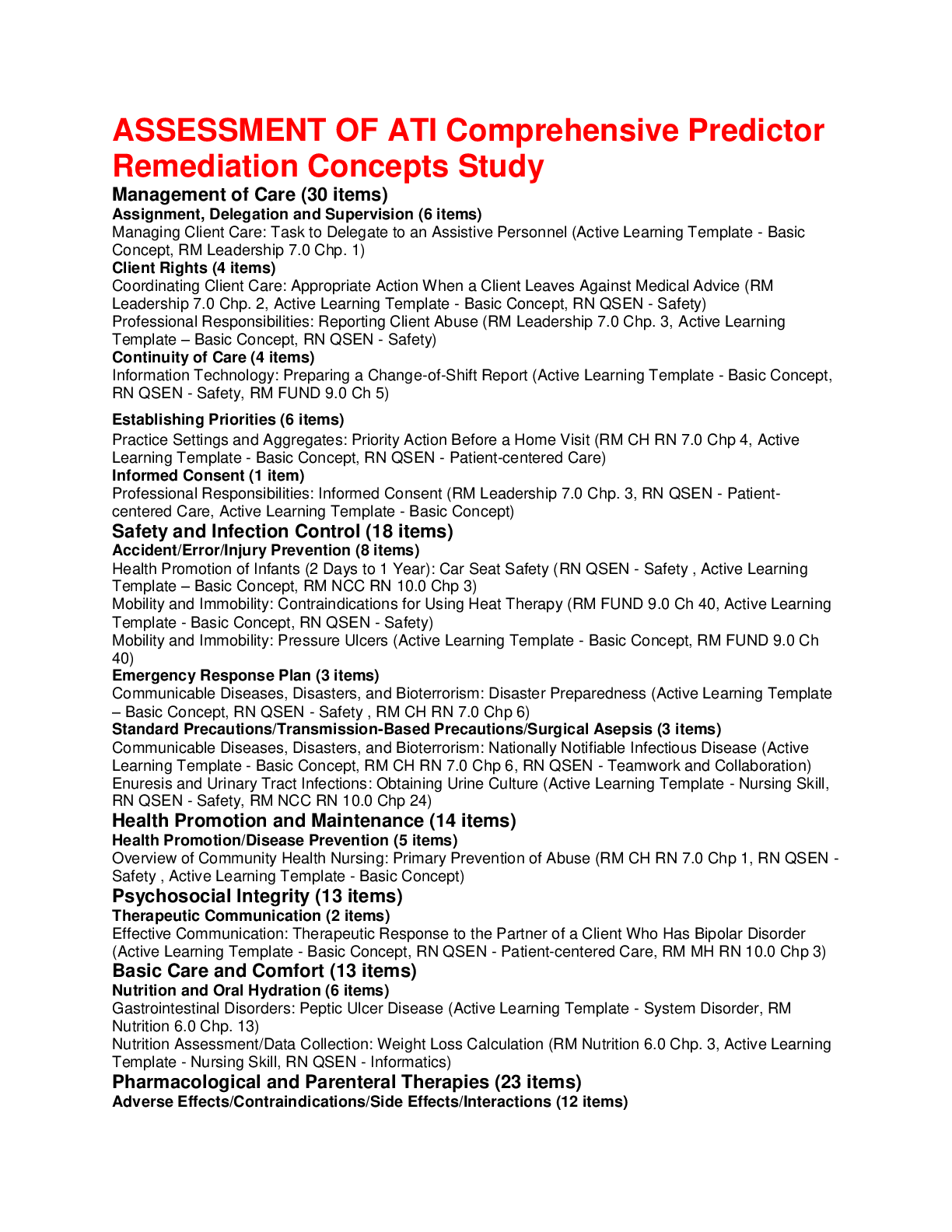
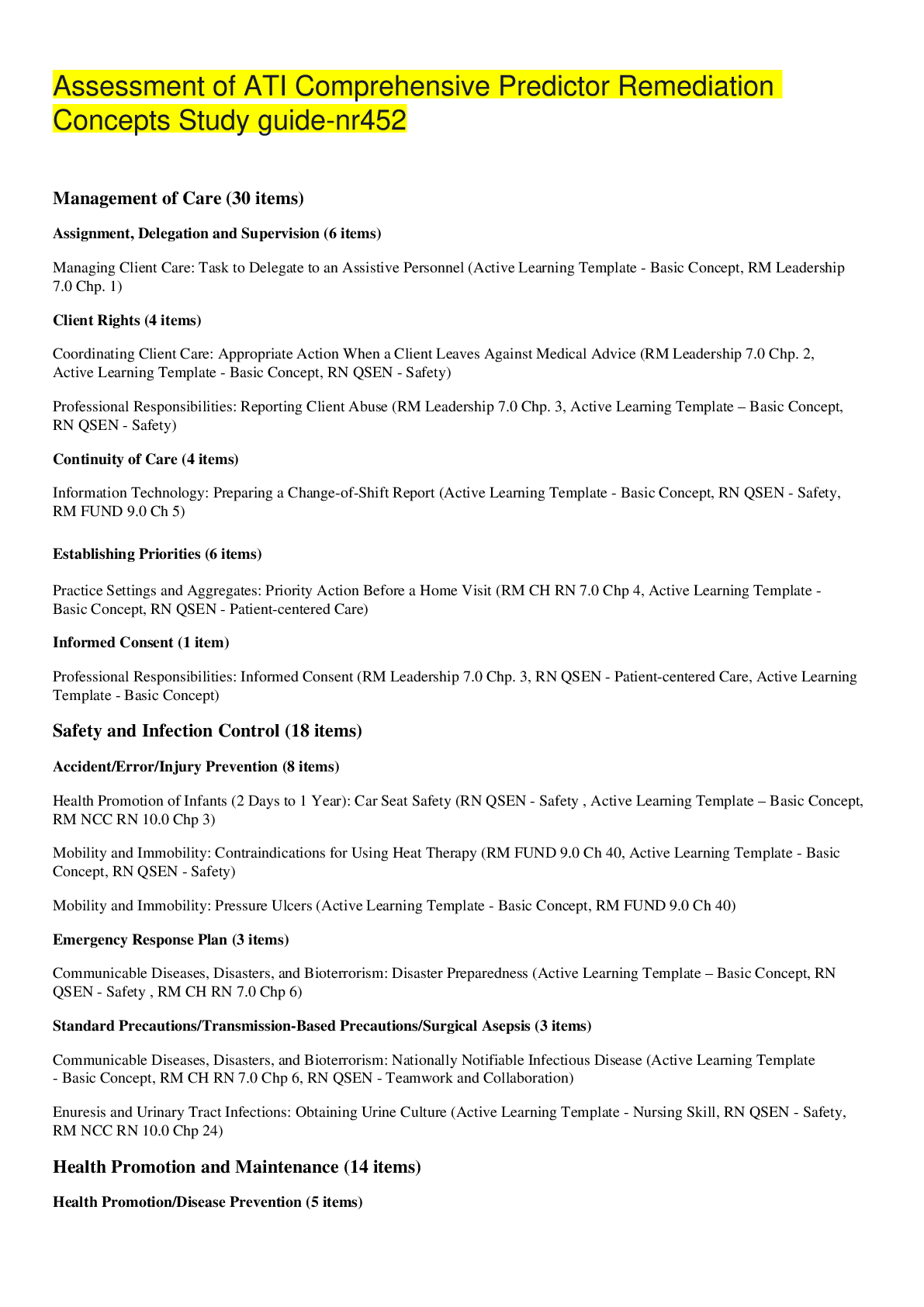







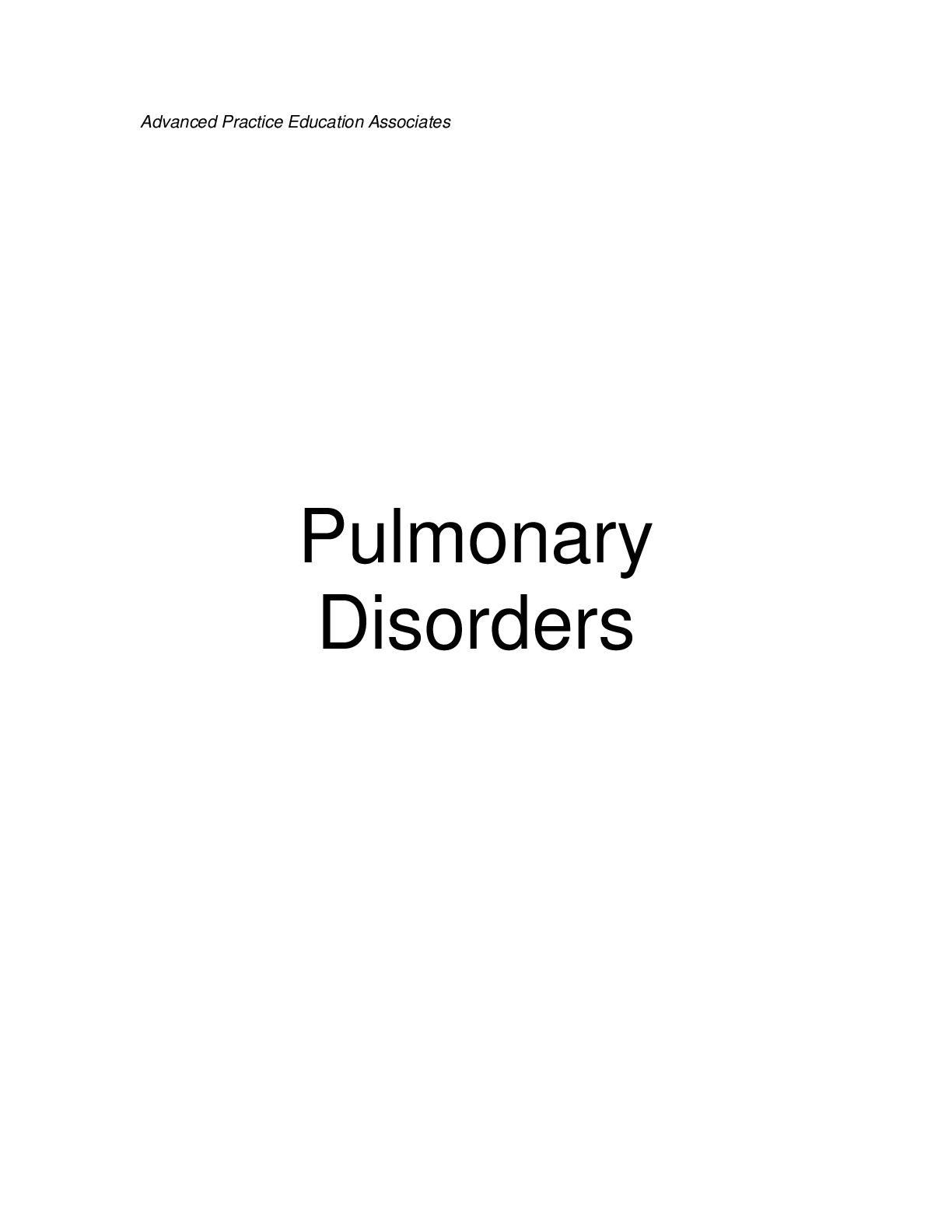
.png)



